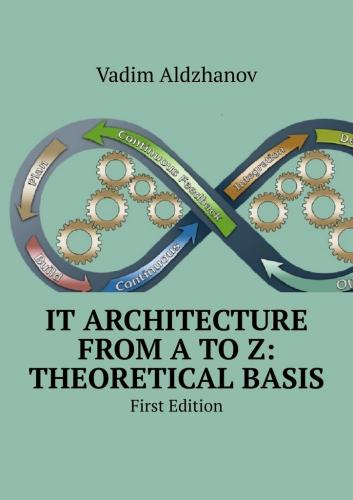Special Thanks
I express my gratitude to my friends, teachers, managers and colleagues for their help in writing the book and their invaluable experience and knowledge obtained via communication with such people as Alexander Buslayev (“AIC Group”), Irshad Guliyev (“SINAM”), Fazil Mammadov (“ROTABANK”), Yana Khmelnitskaya and Karsten Stellner (“LFS Financial Systems GmbH”), Thomas Engelhardt (“Microfinance Bank of Azerbaijan”), Andrew Pospielovsky (“ACCESSBANK”) and Alan Crompton (“Baku European Games Operation Committee BEGOC 2015”).
Legal Notice
The information contained in the book does not carry any trade secrets or other confidential information. The materials are collected from open sources, revised by the author by using his experience and knowledge. Some of the examples reviewed are for reference only and are fictional. Any similarity with real people or organizations is accidental. All companies and product names mentioned in the book may be trademarks of their respective owners.
Copyright
The information specified in the book may not be reproduced, duplicated, copied, transmitted, distributed, stored or used for any commercial and non-commercial use without the written consent of the author.
@ Copyrights Vadim Aldzhanov, 2018
Disclaimer
The author makes no warranties or statements about the accuracy, suitability or completeness of the information, links or other items contained in this document. The book is available to all readers “as is” without any express or implied representations or warranties, including warranties regarding merchantability or suitability for a particular purpose. The document may contain inaccuracies or spelling errors.
The author does not assume any liability for direct, indirect, incidental or other damages when using this guide. The reader of this manual is informed.
This book is dedicated to my parents, my loving wife and two wonderful daughters.
CONTENT DETAILS
The first book of a series includes a discussion of the theoretical basis for building an IT company and considers the following:
•Chapter 1: Building the Enterprise Architecture deals with the issues of building Enterprise Architecture, IT strategies, and so on.
•Chapter 2: Project Management discusses the foundations, applied methodologies, accepted methods of the Project Management, and so on.
•Chapter 3: Risk Management considers methods of risk assessment, risk classification and risk response.
•Chapter 4: Quality Management describes the basic principles and methods of project management when using methods based on the principles of quality management and economical production.
•Chapter 5: Business Process Management and Business Models of various business areas considers the basis of building business processes, the type of business organization and linkages with information systems.
•Chapter 6: Information Systems and Data Integration addresses issues of data integration between different information systems, various architectural solutions, challenges and opportunities. It also deals with the levels of centralization of automated management systems are considered.
•Chapter 7: Information Security considers information security issues and arranging interaction of information security and IT.
•Chapter 8: IT Service Management considers the processes of building IT service management using ITIL.
•Chapter 9: IT Control and Audit addressed general issues of IT control and auditing.
•Chapter 10: IT financing considers financing models, principles of evaluating IT projects, methods and practices for valuation of IT services, etc.
•Chapter 11: Organization of IT Activities discussed general issues on the structure, organization, management of the IT department.
•Chapter 12: Components of IT Infrastructure considers high-level components of IT infrastructure.
•Chapter 13: Components of IT Support Systems considers the high-level components of engineering and support systems.
IT ENTERPRISE ARCHITECTURE
General Provisions
This chapter describes the general information on Enterprise
Architecture. A generic definition can be represented as depicted below:
“Relationships of IT methodologies”
Enterprise Architecture is a set of principles, methods and models used in the design and implementation of an organizational structure, business processes, information systems and technologies. It is a management practice aimed at maximizing the impact of the enterprise, investing in IT, developing systems in achieving the enterprise goals, converting the business vision and strategy into an effective change of the company through creating, discussing and improving key requirements and principles that describe the company’s future state and enable its development.
Since the Enterprise Architecture is a complex solution including the intersection of various methodologies and techniques, building an Enterprise Architecture should take into account, but not be limited to, the recommendations of the following standards:
•TOGAF – Enterprise Architecture
•ISO/IEC 20000 – Quality in IT Service Management
•ISO/IEC 27000 – Best Practice IT Security Standards
•CobiT v5 – Audit and Control Framework
•ITIL v3 – Best practices in IT Service Management
•MOF – Microsoft Operations Framework
•PMI – Project Management Institute
The architecture is designed to respond to such challenges and problems of the organization as:
• Business discontent of the IT service for objective or subjective reasons.
• Inability to assess the effectiveness of IT use in business.
• Mess in IT solutions and systems implemented in the organization.
• The complexity of making IT-related decisions.
• The complexity of IT budget coordination and the launch of IT projects.
• Growth of “Information” value and connectivity between business and IT.
• Lack of transparent and clear connections between business and IT.
• Whether solving the actual business problems using IT is possible?
• How to make IT give companies greater value?
• How to change IT with changes within business?
• IT systems are complex, unmanageable and expensive to maintain.
• IT systems restrain an organization from responding adequately to changes within business.
• Business-critical information is untimely and inadequate.
• Communication culture between business and IT is missing.
As a result, the business does not see any value in information technologies. CIO’s face difficulties in pushing new ideas if they talk about technology. They are not understood. Everything they can do is to support what already exists and do the objectives pitched by the business. The serious problems arise with the justification of IT budgets. In fact, the CIO acts more like a foreman who fills in the holes, rather than a top manager who is developing the company. Top managers quickly
